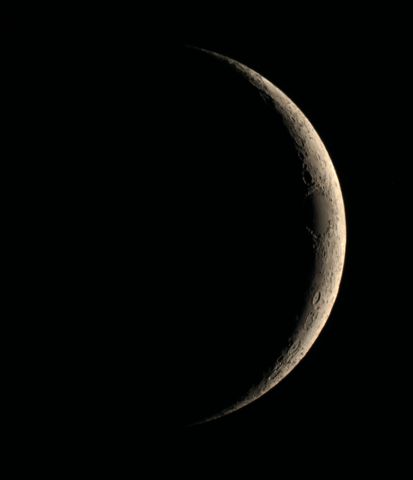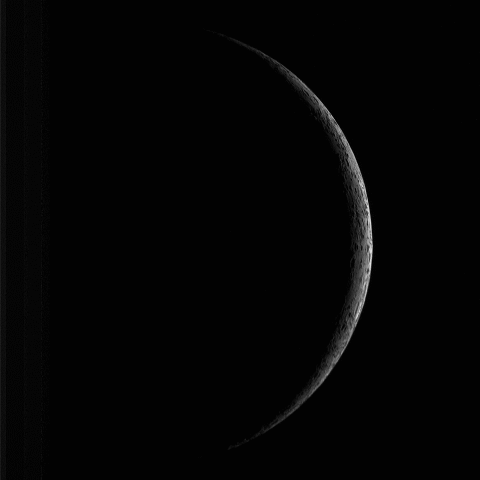

Click on the picture to see the full-sized image

The Moon on Day 2.8
Day: 2.8
Date & Time: 26th February 2020, 18:13 UT
Libration: latitude 7° 3', longitude -2° 18'
Lunar Phase: 145.9°
Colongitude: 305.8°
Telescope: 8-inch Ritchey-Chrétien
Camera: Canon 1100D DSLR
Capture: 10 frames, 1/100 sec, ISO 400
Processing:
Registax. 10 frames stacked. Histogram 0-165,
wavelets 1-2 = 10. Focus Magic 4

The Moon on Day 2.1
Day: 2.1
Date & Time: 1st June 2022, 21:04 UT
Libration: latitude -4° 4', longitude -1° 48'
Lunar Phase: 153.7°
Colongitude: 297.6°
Telescope: 8-inch Ritchey-Chrétien
Camera: Modified Canon 600D DSLR
Capture: 10 frames, 1/200 sec, ISO 800
Processing:
Extraction of the red signal and Linearisation with my own software.
Registax. 10 frames stacked. Wavelets 1-2 = 10. Focus Magic 5
I am still hoping to capture Day 1 to complete my collection. Here I missed it by about 5 hours. I used a modified DSRL camera because I was hoping to cut through the bright sky by using an infrared-pass filter. Unfortunately I chose the wrong filter, with a pass limit of 742nm it let through too little light for the camera to register without much too long an exposure. The consequence is that the modified camera produced an image with much too high a response in the red. Since there was little chance of a meaningful colour picture, it seemed sensible to remove the relatively weak signal in the green and blue and produce a monochrome image from the red signal. My linearisation software can do this.
Contrary to my usual practice, I have provided an annotated version of this picture, reduced to 40% of its full size, here. It is difficult to identify many features in such a narrow crescent, but I have done my best. Mare Margenis is particularly interesting; the light is striking the surface at a very low angle and reflects from the normally dark surface making it appear bright.
Home Back to the Moon